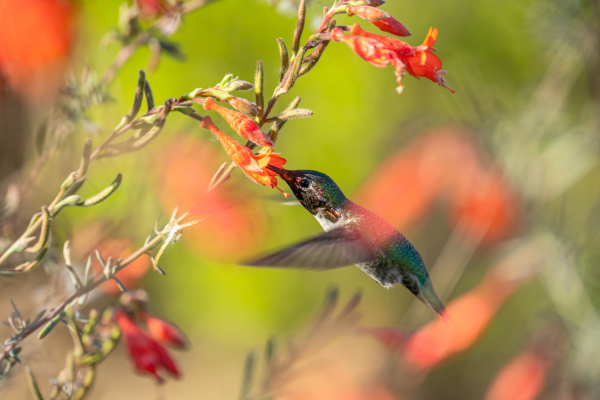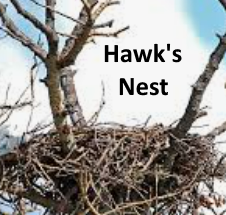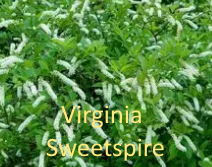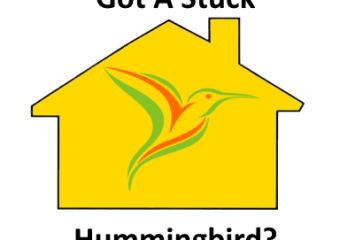Best Flowers to Attract Hummingbirds to Your Garden
Hummingbirds are some of the most captivating visitors to any garden, with their vibrant colors and rapid wing beats making them a delight to watch. If you’re looking to create a lively, hummingbird-friendly environment, selecting the right flowers is essential. By choosing blooms that provide ample nectar and suit hummingbirds’ feeding habits, you can encourage these tiny marvels to frequent your outdoor space. Here’s an in-depth guide to the best flowers to attract hummingbirds to your garden.
Why Do Hummingbirds Choose Certain Flowers?
Hummingbirds have specific criteria for the flowers they visit more often. Generally, they prefer brightly colored flowers, especially those in shades of red, orange, pink, and purple. These hues are easier for hummingbirds to spot. Additionally, flowers with tubular shapes are ideal because their long, narrow form fits perfectly with the hummingbird’s long, slender beak and tongue designed for extracting nectar deep within blooms.
Moreover, nectar is a vital energy source for hummingbirds—their high metabolism demands quick and rich fuel. Therefore, flowers that produce abundant, sugar-rich nectar are naturally more attractive to them.
Top Flowers to Bring Hummingbirds to Your Garden
- Trumpet Vine (Campsis radicans)
Known for its bright orange-red, trumpet-shaped flowers, the trumpet vine is a hummingbird magnet. It’s a vigorous climber that can cover trellises and fences, providing both nectar and shelter. The large blooms are perfect for hummingbirds to feed on, and its blooming period lasts from summer into fall, ensuring a steady food source. - Bee Balm (Monarda)
Bee balm is a perennial flower with spiky, tubular blossoms in shades of red, pink, purple, and white. Its strong fragrance also attracts butterflies and bees, making it a beneficial addition for pollinator gardens. The plant flourishes in full sun and well-drained soil, producing abundant nectar throughout the mid-summer months. - Salvia (Salvia spp.)
Salvias come in many varieties, most featuring vibrant blue, red, or purple flowers with strong tubular shapes. They bloom profusely and can thrive in a variety of climates. Hummingbirds love the tall stalks covered in flowers where they can easily hover and sip nectar. - Cardinal Flower (Lobelia cardinalis)
Cardinal flowers are striking with their brilliant scarlet blooms that stand out vividly in any garden setting. They prefer moist soil and can brighten up shady spots by streams or ponds. Their rich nectar supply makes them a favored food source for hummingbirds during their active summer months. - Fuchsia (Fuchsia magellanica)
Fuchsias produce pendulous, bell-shaped flowers in vibrant pink and purple tones that sway gently in the breeze. These flowers are especially popular in hanging baskets or containers and offer an excellent nectar source. They perform well in partial shade and cooler garden areas, expanding the options for hummingbird enthusiasts. - Zinnia (Zinnia elegans)
While not tubular, zinnias’ bright red, orange, and pink colors and wide-open flower heads are often visited by hummingbirds. They are easy to grow annuals that bloom throughout the summer and into fall, providing a long-lasting nectar supply. - Coral Honeysuckle (Lonicera sempervirens)
Coral honeysuckle is a beautifully twining vine with clusters of coral-red tubular flowers that are irresistible to hummingbirds. Unlike its invasive cousin, the trumpet honeysuckle, coral honeysuckle is non-invasive and friendly to native ecosystems.
Additional Tips for Attracting Hummingbirds
- Plant in Clusters: Grouping flowers together in clusters makes it easier for hummingbirds to spot and access nectar resources.
- Provide Water: Small water features or misters can attract hummingbirds, which enjoy bathing and drinking throughout the day.
- Avoid Pesticides: Using chemicals can harm hummingbirds and other pollinators. Opt for organic gardening methods instead.
- Offer Perches: Hummingbirds often perch between feeding sessions. Placing thin branches or stakes near flower beds can give them a resting spot.
Seasonal Considerations
To keep hummingbirds visiting your garden year-round, consider planting flowers that bloom at staggered times. Early bloomers like penstemons can greet migrating hummingbirds in spring, while late bloomers like scarlet sage or goldenrod offer food well into the fall.
Conclusion
Attracting hummingbirds to your garden is a rewarding endeavor that adds dynamic beauty and ecological value to your outdoor space. By selecting the best flowers—those with vibrant colors, tubular shapes, and rich nectar—you can create a sanctuary these tiny birds will return to again and again. Incorporate a diverse mix of native and non-native species, ensure a pesticide-free environment, and enjoy the lively activity and delicate charm that hummingbirds bring to any garden.






